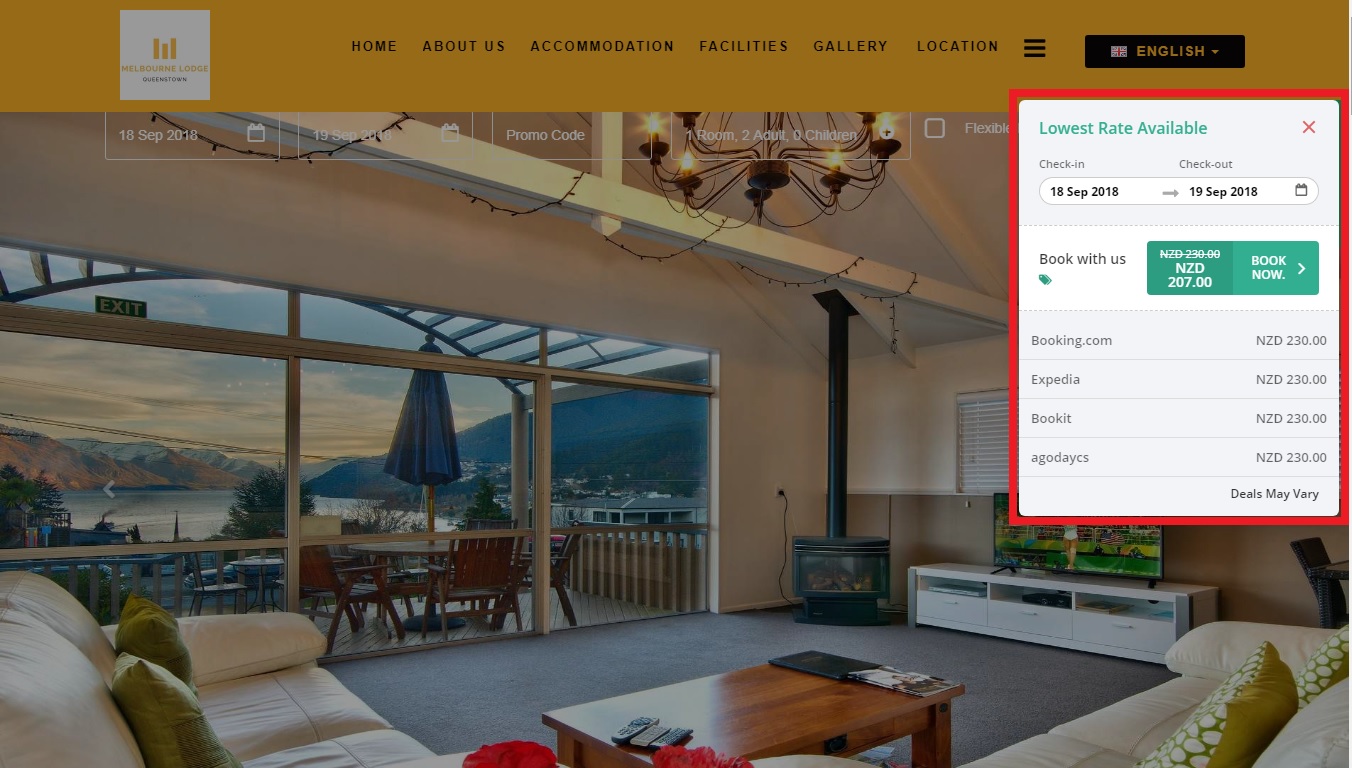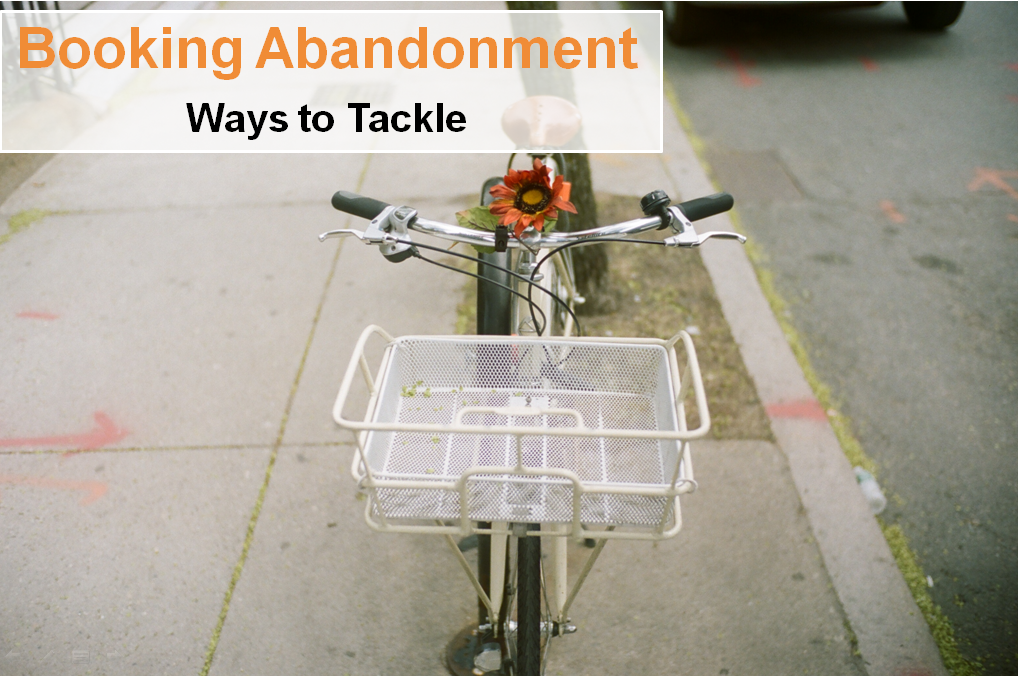Are you worried about the alarmingly high drop-off rates at the booking stage? You’re not the only one. 81.6%* of online travel bookings are abandoned according to a survey – worth an estimated $1.78 trillion!
Cart abandonment is highest for online travel agents – at 86.4% – while hotels and lodging come in at 78.3% according to this SalesCycle survey.
While you cannot eliminate this problem, there are some things you can do to lower the rate. Let’s explore.
First, Let’s Understand What Cart Abandonment Is
The phenomenon of a customer simply deciding to leave an e-commerce transaction has come to be referred to as cart abandonment. These are users who start filling out a booking form, but never complete the transaction.
Why Is This Happening?
That’s part of the problem. There is no definitive answer. Some of the common reasons that come up as part of surveys are:
- Device Smaller the screen, bigger the abandonment issue. Users still don’t completely trust mobile purchases. Abandonment rate is 85.6% on mobile compared to 73.1% on desktop. As we now move into a world where traffic is increasingly mobile, the abandonment rate incidence is more apparent.
- Extra costs. It is at the time of check out that people realise the added cost of extras such as breakfast, kids, etc.
- User experience. Slow loading websites or booking engines, a requirement to create an account before booking, and security questions all add up to poor user experience. The result – cart abandonment.
- The ‘just looking’ factor: Even at the booking stage, many people are still researching and that is a big reason for abandoning a booking midway.
- The fear of not being able to cancel or booking changes coming at a high cost are also commonly associated with cart abandonment.

How Can You Fix It?
1. Provide Clear Pricing
There are two parts to this problem. First, the total price, which includes taxes, can sometimes appear too high. Add to that the extras and suddenly a dream holiday becomes something to think about for most users.
On the other hand, if you add the extra costs at the booking level, the total price becomes surprisingly high, encouraging users to quit midway.
Experts recommend providing a breakdown of pricing – taxes, add-ons, etc. when showing your rates at the start of the booking process. Leverage STAAH’s Package Display feature to emphasize price break-down.
2. Are You Coming Across as ‘Too Pricey’?
Users may decide to quit because the price is too high for their budget. These users need to let go as they are not your audience. There is another set of users who believe the price is too high for the perceived value of your hotel, i.e. they just don’t think your property is worth the rate you’re asking.
You can fix this. First, look around at your competitors. What rates are they offering? What services or extra are included in this rate? Are you offering similar services, but priced too high? If yes, adjust your rates to the market. Pro tip: STAAH’s RateSTalk feature is a great way to keep across your competitor’s rates. It is an easy addition to your STAAH channel manager.
3. Don’t Let Them Shop Around
They’re there, but not really. Price-conscious travelers abandon bookings at the last minute to check out rates on OTAs that are commonly perceived to offer ‘great deals’. You can keep these users by providing easy access to OTA rates on your website, giving them no reason to move away from your website. This STAAH booking engine feature is called WatchMyRate and has helped many STAAH customers improve profitability via increased direct bookings.

4. Give Them Reason To Book Direct
Further to the point above; you’ve managed to keep them on your site. Now, win them over by sweetening the deal to book direct. This doesn’t necessarily mean a price discount. Offer them something special, like late checkout, a welcome drink, free spa… something that has a perceived higher value than what is available elsewhere.
5. Make the Booking Process Easy
Make it easy to get to your booking engine (eg. STAAH has a three-step booking process). Once in, don’t complicate the booking by requesting more information than is required and an easy check-out process. It is extremely important to ensure that users are made aware that your website is a secure one to book on. Ensure your booking engine has the highest security requirements (eg. STAAH is PCI-certified).
6. Fix Load Time
According to a Tnooz report, 32% of travel bookings are abandoned because of slow load times. Make sure your website and booking engine are optimised for speed, especially on mobile where an increasing number of bookings are happening.

7. Become a Hub of Local Stories
Give the users on your site for research a reason to stay by telling unique and authentic local stories and becoming a destination champion. It reduces the need to abandon your site for another. STAAH’s latest integration with Viator now even allows users to book popular local experiences while checking out from your site. The best part, you can clip the ticket on this activity!
8. Remarketing
‘Not ready for purchase’ is one of the very common reasons why users abandon their cart. Many times, it takes multiple visits for a customer to complete the order. Fortunately, three-quarters of those abandoning their carts intend to return. So how do you bring them back?
By remarketing.
Send them a series of messages via social channels and Google’s advertising network. A simple code added to your website (available as a feature on the STAAH booking engine) can do the trick. Remarketing is an efficient paid ad opportunity that should not be missed.
*https://blog.salecycle.com/strategies/abandonment-rates-higher-travel-sites/
